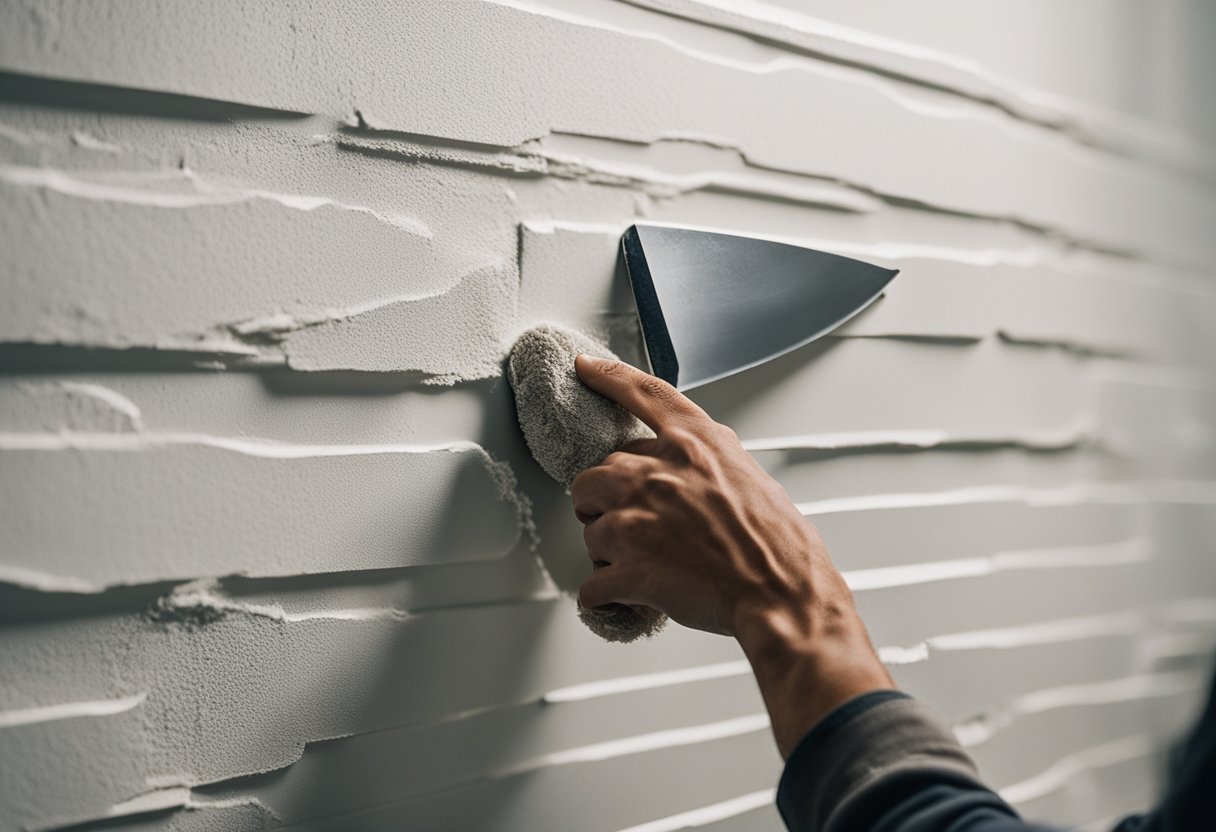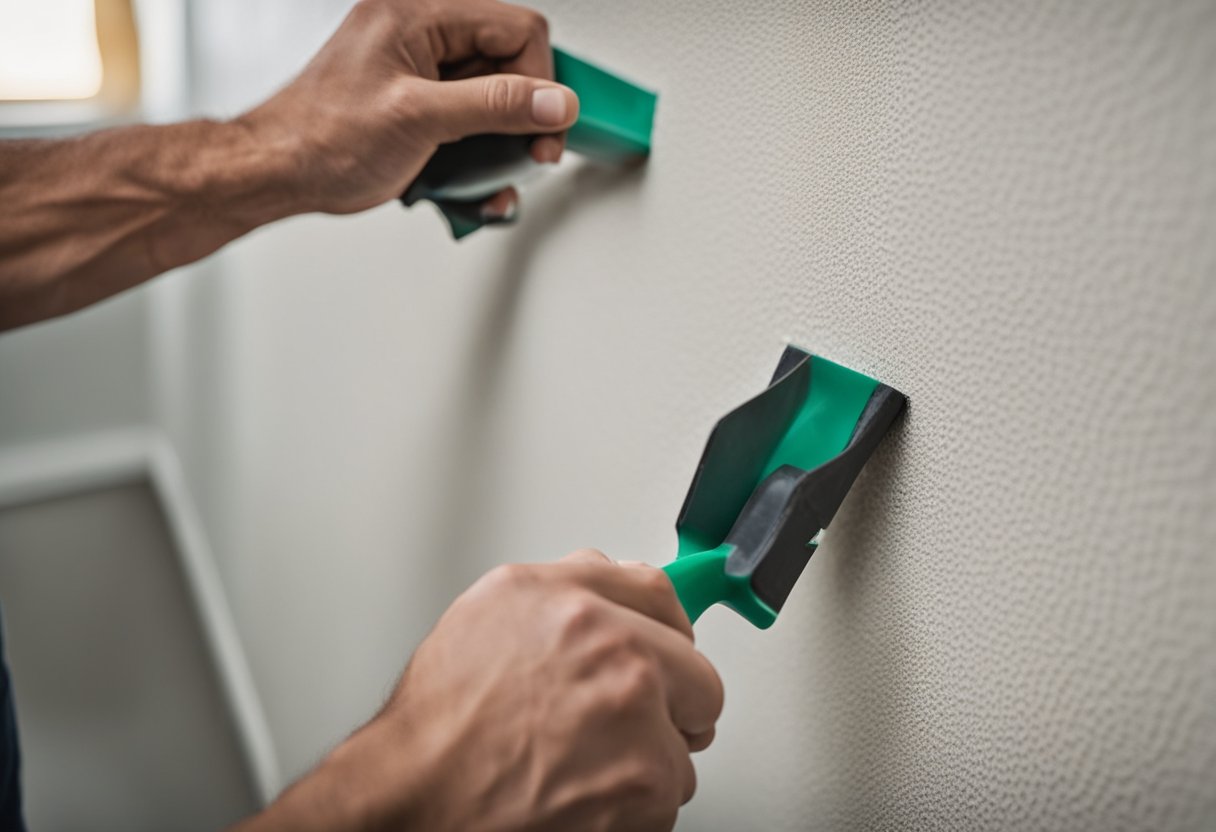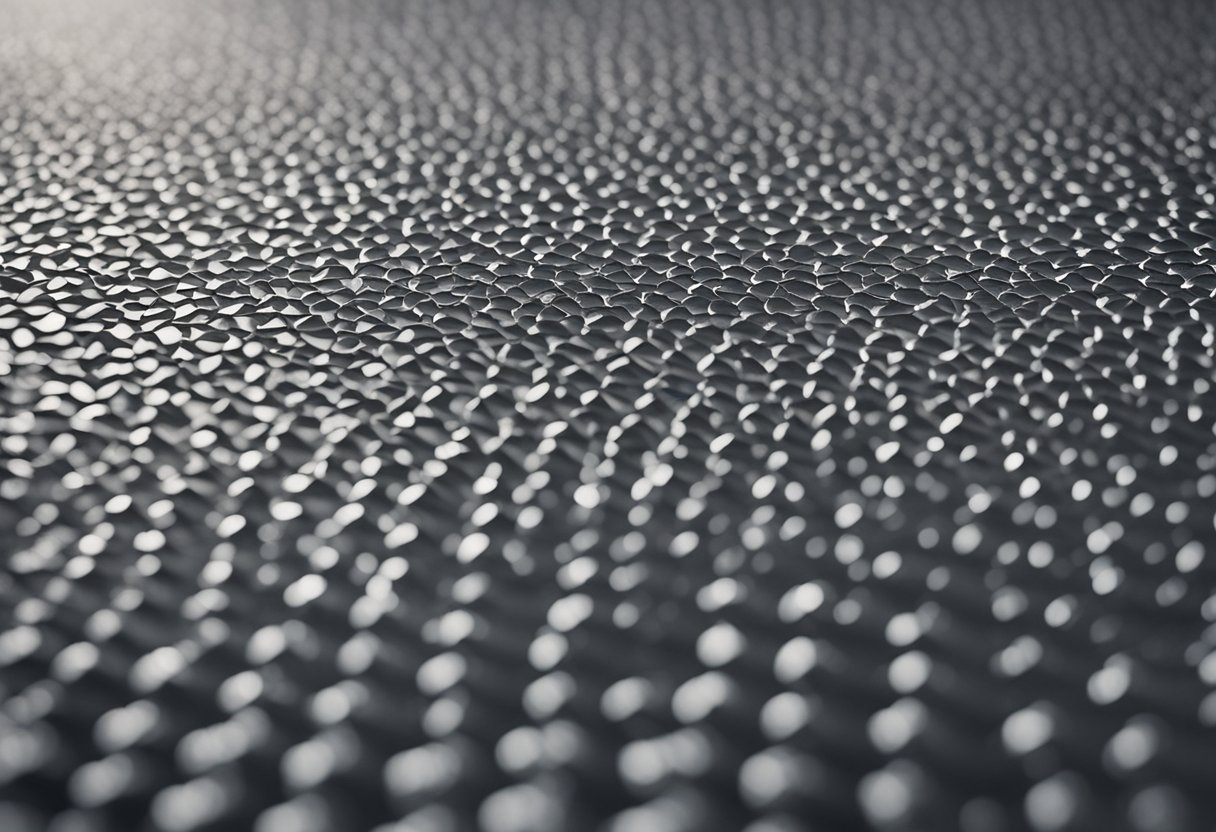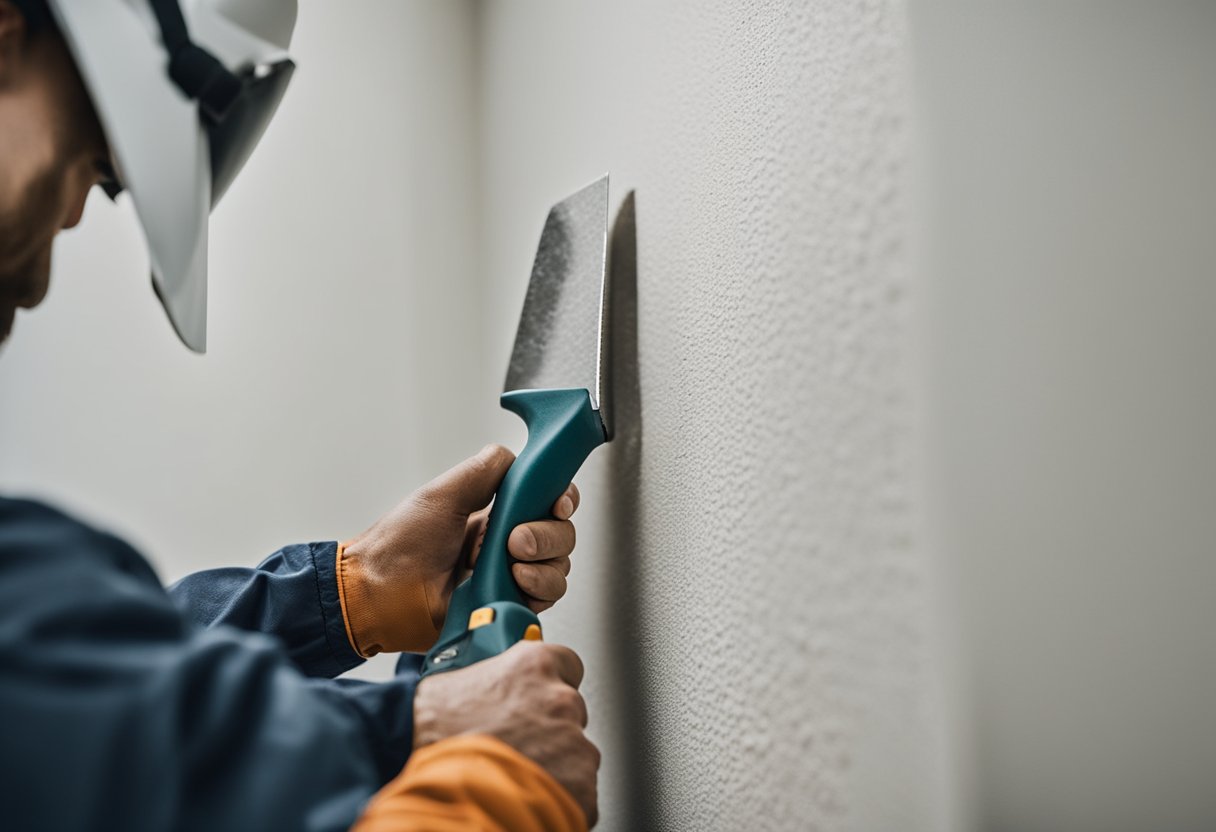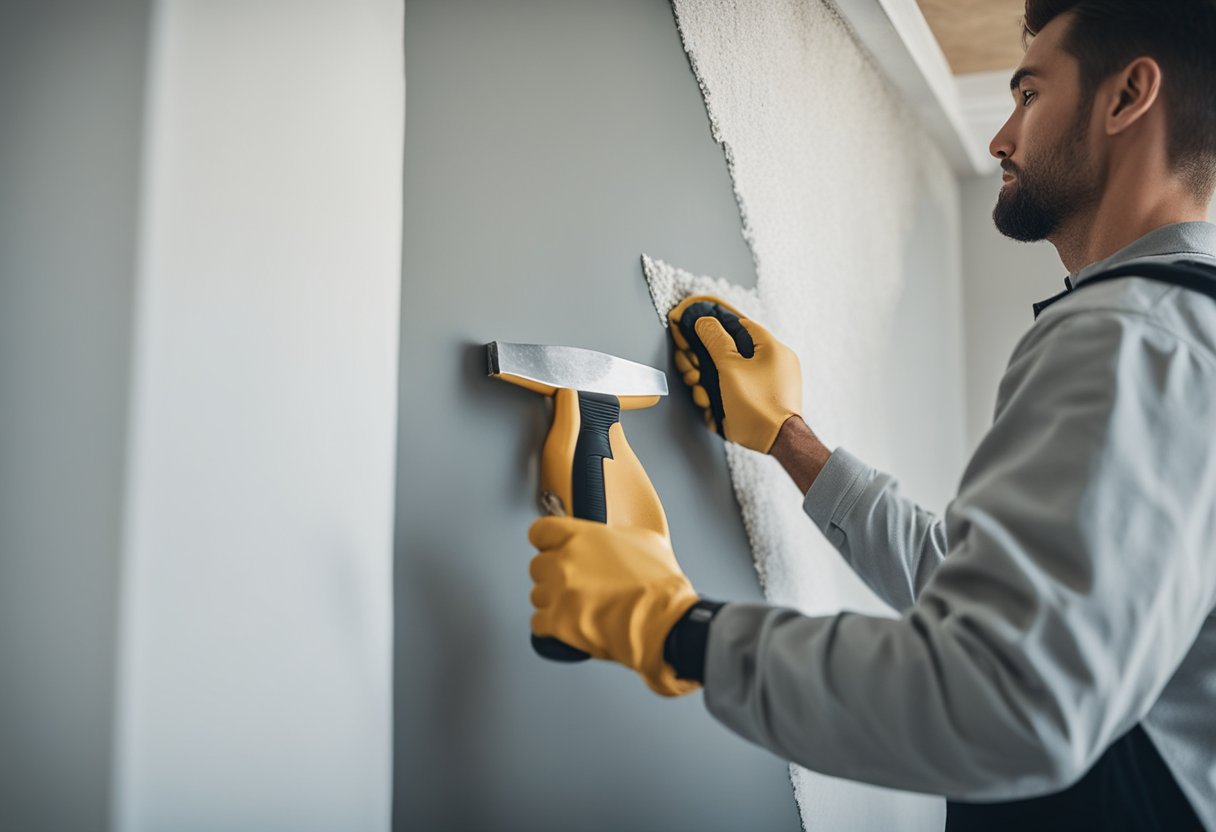Drywall is a popular building material that is used to create walls and ceilings in a wide range of residential and commercial settings. One of the most common questions that people have about drywall is whether or not it needs to be textured. The answer to this question is not a simple yes or no, as there are a number of factors that can influence the need for drywall texturing.
Understanding Drywall Texturing
Drywall texturing is the process of adding a decorative finish to the surface of drywall. Textured drywall can be created using a variety of techniques, including sanding, troweling, spraying, and rolling. The purpose of drywall texturing is to create a more interesting and visually appealing surface that can help to hide imperfections and provide a unique look to a room. However, not all drywall installations require texturing, and there are some situations where a smooth, untextured surface may be preferred.
Key Takeaways
- Drywall texturing is not always necessary, but it can provide a unique look and help to hide imperfections.
- Essential tools and materials for drywall texturing include sandpaper, drywall mud, a trowel, and a texture sprayer.
- Choosing the right contractor is important for achieving a high-quality textured drywall finish.
Understanding Drywall Texturing
https://www.youtube.com/watch?v=mwN0Fw10ZVA&embed=true
As a professional in the construction industry, I have come across many clients who ask me if they should texture their drywall. The answer to this question is not straightforward, as it depends on several factors. In this section, I will explain drywall texturing, its purpose, and when it is necessary.
Drywall texturing is the process of adding a decorative finish to the surface of drywall. It is done to give the wall a unique look and feel. There are several types of wall textures, including knockdown, orange peel, popcorn, slap brush, comb, skip trowel, stomp-knockdown, venetian, bas-relief, and smooth drywall finish.
The purpose of drywall texturing is to hide imperfections on the wall surface. For instance, if there are dents, scratches, or other marks on the wall, texturing can help to camouflage them. Texturing is also used to add depth and character to the wall surface. It can make a room feel cozier or more spacious, depending on the texture used.
When it comes to whether or not to texture drywall, it depends on the client’s preference and the type of room. For instance, if the room is a high-traffic area, such as a hallway or living room, texturing can help to hide any wear and tear. On the other hand, if the room is a bedroom or office, a smooth drywall finish may be more appropriate.
In conclusion, drywall texturing is a personal preference and depends on the type of room and its purpose. It is essential to understand the different types of wall textures available and their purpose before deciding whether or not to texture your drywall.
Essential Tools and Materials
https://www.youtube.com/watch?v=vu0RLz2BdeE&embed=true
When it comes to drywall installation, there are several essential tools and materials that you’ll need to get the job done right. Here are some of the most important ones:
Drywall Compound and Joint Compound
Drywall compound and joint compound are both essential materials for drywall installation. Drywall compound is used to cover the seams between the drywall sheets, while joint compound is used to cover the screws and nails that hold the drywall in place. Both types of compound come in powder form and need to be mixed with water before use.
Trowel, Brush, and Roller
Trowels, brushes, and rollers are all used to apply drywall and joint compound to the wall. Trowels are used to smooth out the compound, while brushes and rollers are used to apply it to the wall. It’s important to choose the right tool for the job, as using the wrong one can result in an uneven finish.
Texture Sprayers and Hopper Guns
If you want to add texture to your drywall, you’ll need a texture sprayer or hopper gun. Texture sprayers are machines that spray the texture onto the wall, while hopper guns are handheld devices that allow you to control the flow of texture.
Sanding Sponges and Knockdown Knives
Once the compound and texture are applied, you’ll need to sand it down to create a smooth finish. Sanding sponges are a great tool for this, as they are flexible and can be used to sand hard-to-reach areas. Knockdown knives are also useful for creating a smooth finish, as they can be used to flatten out any bumps or ridges in the texture.
Air Compressor, Rags, and Tissue Paper
Finally, an air compressor can be useful for blowing any dust or debris off the wall before painting. Rags and tissue paper can also be used to wipe down the wall and remove any excess compound or texture.
Overall, having the right tools and materials is essential for achieving a professional-looking finish when installing drywall. With the right tools and a bit of patience, anyone can achieve great results.
Preparation Steps for Texturing Drywall
https://www.youtube.com/watch?v=W6ZyXPYydYM&embed=true
When it comes to texturing drywall, preparation is key. Before starting any texturing project, it is important to make sure that the surface is clean, dry, and free of any repairs. Here are a few preparation steps to take before texturing your drywall:
-
Clean the surface: Before texturing your drywall, make sure to clean the surface thoroughly. Any dirt, dust, or debris can affect the texture and cause it to be uneven. Use a damp cloth or sponge to wipe down the surface and remove any dirt or dust.
-
Repair any damages: If there are any damages or repairs needed on the drywall surface, make sure to address them before texturing. Any holes, cracks, or dents should be filled with spackle and sanded down until smooth. This will ensure that the texture is even and consistent.
-
Apply a primer: Applying a primer to the surface before texturing can help the texture adhere better and create a more consistent finish. The primer will also help to seal any repairs and create a smooth surface for the texture to be applied to.
-
Protect surrounding areas: Texturing can be a messy DIY project, so it is important to protect any surrounding areas from overspray or splatter. Cover floors, furniture, and any other nearby surfaces with drop cloths or plastic sheeting to prevent any damage.
By following these preparation steps, you can ensure that your drywall texturing project goes smoothly and produces a professional-looking finish. With a little bit of effort and attention to detail, you can transform any room in your home with textured walls.
Techniques for Applying Drywall Texture
https://www.youtube.com/watch?v=RBpwPvg6PHM&embed=true
When it comes to drywall texture, there are several techniques that can be used to achieve different results. Here are some of the most common techniques:
1. Knockdown Texture
Knockdown texture is a popular choice for ceilings and walls. This technique involves applying joint compound or drywall mud to the surface and then smoothing it down with a knife to create a marbled texture. The result is a subtle, elegant look that can be painted any color.
2. Orange Peel Texture
Orange peel texture is another popular choice for walls and ceilings. This technique involves spraying a mixture of joint compound and water onto the surface using a hopper gun. The result is a texture that resembles the skin of an orange. This technique is great for hiding imperfections on walls and ceilings.
3. Popcorn Texture
Popcorn texture, also known as acoustic texture, is a technique that involves spraying a mixture of joint compound and small Styrofoam balls onto the surface. The result is a texture that resembles popcorn. This technique is great for soundproofing and is often used in movie theaters and recording studios.
4. Slap Brush Texture
Slap brush texture is a technique that involves using a brush to slap the joint compound onto the surface. The result is a texture that resembles a series of peaks and valleys. This technique is great for creating a rustic, natural look.
5. Comb Texture
Comb texture is a technique that involves using a comb to create a series of lines in the joint compound. The result is a texture that resembles a series of parallel lines. This technique is great for creating a modern, geometric look.
6. Stomp-Knockdown Technique
The stomp-knockdown technique is a combination of the slap brush and knockdown techniques. This technique involves slapping the joint compound onto the surface and then using a knife to smooth it down. The result is a texture that resembles a series of peaks and valleys with a marbled effect.
7. Slap Brush Knockdown Texture
Slap brush knockdown texture is a technique that involves slapping the joint compound onto the surface with a brush and then using a knife to smooth it down. The result is a texture that resembles a series of peaks and valleys with a subtle marbled effect.
8. Random Pattern
Random pattern is a technique that involves using a combination of techniques to create a unique, one-of-a-kind texture. This technique is great for creating a custom look that is tailored to your specific needs and preferences.
Painting Over Textured Drywall
https://www.youtube.com/watch?v=ezJWBnyFBmk&embed=true
When it comes to painting over textured drywall, the question is whether you need to prime before painting. The short answer is yes, you should prime before painting textured drywall.
Priming creates a smooth surface for the paint to adhere to, which helps to achieve a more even finish. It also helps to seal the drywall, preventing moisture from being absorbed into the surface, which can cause problems later on.
When selecting a primer, it’s important to choose one that is specifically designed for textured surfaces. Look for primers that are labeled as “high build” or “problem surface” primers. These types of primers are thicker and have more solids, which will help to fill in any gaps or irregularities in the textured surface.
Once you have primed the textured drywall, you can then paint it with your chosen color. When selecting paint, you can choose either a smooth or textured finish, depending on your preference. Smooth finishes are more common and are achieved using a paint roller or brush. Textured finishes are achieved using a textured paint, which can be applied using a roller or spray gun.
When painting textured drywall, it’s important to use a high-quality paint that is specifically designed for this purpose. This will help to ensure that the paint adheres properly to the surface and provides a long-lasting finish.
In summary, when painting over textured drywall, it’s important to prime the surface before painting to achieve a smooth, even finish. Choose a primer and paint that are specifically designed for textured surfaces, and use a high-quality paint to ensure a long-lasting finish.
Maintaining and Repairing Textured Drywall
As someone who has worked with drywall for years, I can confidently say that textured drywall is a popular choice for many homeowners. While it’s not always necessary to texture your walls, it can help to hide imperfections and give your walls a unique look. However, textured drywall can also be more difficult to maintain and repair than smooth drywall.
When it comes to maintaining textured drywall, it’s important to keep in mind that the quality of the job will affect how long the texture lasts. If the texture was applied correctly, it should hold up well over time. However, if the texture was poorly done, it may start to peel or crack, which can be unsightly and require costly repairs.
If you do notice any imperfections in your textured walls, it’s best to address them sooner rather than later. Small cracks or chips can be filled in with joint compound and sanded down to blend in with the texture. Larger repairs may require more extensive work, such as cutting out the damaged section of drywall and replacing it with a new piece.
One thing to keep in mind when repairing textured drywall is the drying process. Because the texture is thicker than a smooth finish, it can take longer to dry. It’s important to give the joint compound plenty of time to dry before sanding or painting over it. Rushing the drying process can result in a poor repair job and may require redoing the work.
In summary, textured drywall can be a great choice for adding character to your walls, but it does require more maintenance and repair than smooth drywall. Keeping an eye on the quality of the job and addressing any imperfections promptly can help to prevent costly repairs down the line.
Benefits of Textured Drywall
As a home improvement enthusiast, I have found that textured drywall has a lot of benefits. Not only does it add an aesthetic appeal to the room, but it also adds personality to the walls. Here are some of the benefits of textured drywall:
-
Camouflages imperfections: One of the biggest benefits of textured drywall is that it can hide imperfections in the drywall finish so it doesn’t have to be repaired, repainted, or refinished as often. This can save time and money in the long run.
-
Adds depth and dimension: Textured drywall can add depth and dimension to the walls, making them more interesting and visually appealing. This can be especially useful in rooms with flat walls or low ceilings.
-
Improves acoustics: Walls with texture can disperse sound waves, lowering echo and improving communication and hearing. This is especially crucial in settings like conference rooms or theaters, where clear communication and an enjoyable experience depend on strong acoustics.
-
Promotes a more unified look: Texturing helps disguise the problems, promoting a more unified look. This can be especially useful in older homes where the walls may not be perfectly straight or smooth.
Overall, textured drywall can be a great addition to any home. It can add personality and depth to the walls while also camouflaging imperfections and improving acoustics. If you’re looking for a way to spruce up your home, textured drywall may be just what you need.
Choosing the Right Contractor
When it comes to drywall installation, choosing the right contractor is crucial. You want to make sure you hire someone who is experienced, reliable, and trustworthy. Here are some tips for selecting the right contractor for your project.
Do Your Research
Before hiring a contractor, do your research. Look for contractors in your area who specialize in drywall installation. Check their websites and social media pages to learn more about their services, experience, and qualifications. You can also ask for recommendations from friends, family, or colleagues who have recently had drywall installed.
Check Their Credentials
It’s important to make sure the contractor you hire is licensed and insured. Ask to see their credentials and make sure they are up-to-date. This will protect you from liability in case of accidents or damages during the installation process.
Ask for References
Ask the contractor for references from previous clients. This will give you an idea of their workmanship, professionalism, and reliability. You can also check online reviews and ratings to see what other customers have to say about their experience with the contractor.
Get a Written Estimate
Before hiring a contractor, make sure you get a written estimate. This should include all the costs associated with the project, including labor, materials, and any additional fees. Make sure you understand what is included in the estimate and ask questions if anything is unclear.
Compare Quotes
It’s a good idea to get quotes from multiple contractors before making a decision. This will help you compare prices and services to find the best fit for your budget and needs.
By following these tips, you can find a contractor who will provide quality drywall installation for your project. Remember to take your time and do your research to ensure a successful outcome.
Frequently Asked Questions
What are the different types of drywall texture?
There are many different types of drywall textures, including popcorn, knockdown, orange peel, and skip trowel. Each type of texture has its own unique look and application method. It’s important to choose a texture that complements your home’s decor and meets your personal preferences.
What are the benefits of textured walls?
Textured walls can add visual interest and depth to a room. They can also help to hide imperfections in the drywall and make a room feel cozier and more inviting. Additionally, textured walls can help to absorb sound and reduce noise levels in a room.
Is it necessary to texture drywall?
No, it is not necessary to texture drywall. Whether or not to texture your drywall is a personal preference. Some people prefer the look and feel of textured walls, while others prefer smooth walls.
Are smooth walls better than textured walls?
There is no definitive answer to this question, as it ultimately comes down to personal preference. Smooth walls can provide a sleek, modern look, while textured walls can add visual interest and depth. It’s important to choose a wall texture that complements your home’s decor and meets your personal preferences.
Can you paint a textured wall?
Yes, you can paint a textured wall. However, it’s important to use the right type of paint and technique to ensure that the texture is not lost in the process. It’s recommended to use a roller with a thick nap to apply the paint, and to use a paint with a flat or eggshell finish to avoid highlighting any imperfections in the texture.
Are textured walls still in style?
Textured walls have been a popular design element for many years and continue to be in style. However, like any design trend, tastes and preferences can change over time. It’s important to choose a wall texture that you love and that complements your home’s decor, regardless of whether or not it’s currently in style.

Hi, I’m Sal Muller of Tooltrip.com. My DIY experience led me to understand essential power tools for home projects. Tooltrip.com guides enthusiasts and professionals in choosing right tools for any job. I provide concise top tool reviews for easier, efficient DIY.

